More in the same line of British comfort food, though if you look around you’ll find there’s barely a nation on this earth that does not have some tasty food morsel buried within a layer of something equating to pastry, even if it is not a pie in the sense that we understand it. So what is a pie? Wikipedia:
A pie is a baked dish which is usually made of a pastry dough casing that covers or completely contains a filling of various sweet or savoury ingredients. Pies are defined by their crusts. A filled pie (also single-crust or bottom-crust), has pastry lining the baking dish, and the filling is placed on top of the pastry but left open. A top-crust pie, which may also be called a cobbler, has the filling in the bottom of the dish and is covered with a pastry or other covering before baking. A two-crust pie has the filling completely enclosed in the pastry shell. Flaky pastry is a typical kind of pastry used for pie crusts, but many things can be used, including baking powder biscuits, mashed potatoes, and crumbs.
While the cultural traditions may be very different, it’s not hard to see why snacks with an edible container, savoury or sweet, might be popular: they’re generally easy to cook, easy to eat and (taken in moderation) digest, quick and tasty to reheat, can easily be commodotised and varied in endless ways, and are loved by the many, certainly around these shores.
Not terribly consistent with modern low-fat lifestyles, though even there you can find what claim to be healthy pies. Ironic then that in the days of Henry VIII, the pastry was merely a bowl from which the contents were eaten, later to be discarded. I don’t suppose it took long to realise that the pastry itself was a fine if fatty addition to the diet, but the innovation spread and local pies popped up everywhere.
Pies go back a very long way, it seems. From Wikipedia
The need for nutritious, easy-to-store, easy-to-carry, and long-lasting foods on long journeys, in particular at sea, was initially solved by taking live food along with a butcher or cook. However, this took up additional space on what were either horse-powered treks or small ships, reducing the time of travel before additional food was required. This resulted in early armies adopting the style of hunter-foraging.
The introduction of the baking of processed cereals including the creation of flour, provided a more reliable source of food. Egyptian sailors carried a flat brittle bread loaf of millet bread called dhourra cake, while the Romans had a biscuit called buccellum.
The first pies appeared around 9500 BC, in the Egyptian Neolithic period or New Stone Age. During this period the use of stone tools shaped by polishing or grinding, the domestication of plants and animals, the establishment of permanent villages, and the practice of crafts such as pottery and weaving became common. Early pies were in the form of flat, round or freeform crusty cakes called galettes consisting of a crust of ground oats, wheat, rye, or barley containing honey as a treat inside. These galettes developed into a form of early sweet pastry or desserts, evidence of which can be found on the tomb walls of the Pharaoh Ramesses II, who ruled from 1304 to 1237 BC, located in the Valley of the Kings.[2] Sometime before 2000 BC, a recipe for chicken pie was written on a tablet in Sumer.
Ancient Greeks are believed to have originated pie pastry. In the plays of Aristophanes (5th century BC) there are mentions of sweetmeats including small pastries filled with fruit. Nothing is known of the actual pastry used, but the Greeks certainly recognized the trade of pastry-cook as distinct from that of baker. (When fat is added to a flour-water paste it becomes pastry.) The Romans made a plain pastry of flour, oil, and water to cover meats and fowls which were baked, thus keeping in the juices. (The covering was not meant to be eaten; it filled the role of what was later called puff paste’) A richer pastry, intended to be eaten, was used to make small pasties containing eggs or little birds which were among the minor items served at banquets.
The 1st century Roman cookbook Apicius makes various mentions of recipes which involve a pie case. By 160 BC, Roman statesman Marcus Porcius Cato (234-149 BC) who wrote De Agri Cultura, notes the recipe for the most popular pie/cake called Placenta. Also called libum by the Romans, it was more like a modern day cheesecake on a pastry base, often used as an offering to the gods. With the development of the Roman Empire and its efficient road transport, pie cooking spread throughout Europe.
Pies remained as a staple of traveling and working peoples in the colder northern European countries, with regional variations based on both the locally grown and available meats, as well as the locally farmed cereal crop. The Cornish pasty is an excellent adaptation of the pie to a working man’s daily food needs.
Medieval cooks had restricted access to ovens due to their costs of construction and need for abundant supplies of fuel. Pies could be easily cooked over an open fire, while partnering with a baker allowed them to cook the filling inside their own locally defined casing. The earliest pie-like recipes refer to coffyns (the word actually used for a basket or box), with straight sealed sides and a top; open top pies were referred to as traps. This may also be the reason why early recipes focus on the filling over the surrounding case, with the partnership development leading to the use of reusable earthenware pie cases which reduced the use of expensive flour.
The first reference to “pyes” as food items appeared in England (in a Latin context) as early as the 12th century, but no unequivocal reference to the item with which the article is concerned is attested until the 14th century (Oxford English Dictionary sb pie).
Song birds at the time were a fine delicacy, and protected by Royal Law. At the coronation of eight-year old English King Henry VI (1422–1461) in 1429, “Partryche and Pecock enhackyll” pie was served, consisting of cooked peacock mounted in its skin on a peacock filled pie. Cooked birds were frequently placed by European royal cooks on top of a large pie to identify its contents, leading to its later adaptation in pre-Victorian times as a porcelain ornament to release of steam and identify a good pie.
The Pilgrim fathers and early settlers brought their pie recipes with them to America, adapting to the ingredients and techniques available to them in the New World. Their first pies were based on berries and fruits pointed out to them by the Native North Americans. Pies allowed colonial cooks to stretch ingredients and also used round shallow pans to literally “cut corners,” and create a regional variation of shallow pie.
We tend to think of the variants of steak pies (with kidney, ale, mushrooms, potatoes etc., not to mention minced beef and onion), though the local traditions are what kept the pie alive. The traditional Cornish dish, the pasty, arose, allegedly, from wives providing lunch for their husbands down the tin mines, which of course would need to be a robust dinner to cope with the buffeting it would get in such an unfriendly location. Typically it would consist of swede and potato at one end, meat in the middle, and often a sweet filling (eg. apple and custard) at the other end, crimped together in the traditional D-shape and baked. The sweet may have vanished in the ensuing years, but now the Cornish Pasty recipe and location are protected under European law.
Everywhere you look there are types of pies and pasties, generally originating from one part of the country, and which is often enshrined in its name. Pork pies are generally made from hot water pastry, filled with either cured or fresh pork and injected with jelly, baked and served cold, but look among their number and you’ll see the Melton Mowbray pie, the one distinguishable by being made solely with fresh pork and a seasoning mix with good fresh-ground pepper. In the same way, stargazy pie is associated with the fishing villages of Cornwall, through the inclusion of fresh pilchards, though tinned will often have been substituted over the years.
A range of common pies to be found might include:
- Fish pie, made with an assortment of fish ends, a creamy white roux sauce made with stock and parsley, possibly cheese, topped with mashed potato
- Shepherds pie, filled with a mixture including minced lamb and also topped with mashed potato and sometimes cheese. A cottage pie is the same but with beef mince
- Game pie – good for using up leftovers from a game roast
- Homity pie – vegetable filling
- Scotch pies, made with double crust crisp shortcrust pastry in a characteristic design and filled with minced meat
- Cheese and onion pies or pasties (a staple at Greggs), often made with a base of mashed potato, mixed with the titular ingredients
- Quiches, not quite the same as bacon-and-egg pies, are baked in a pastry case
- Fruit pies, usually but not exclusively made with apple and other fruits
- Sausage rolls
- Jamaican-style curry patties and something very similar but equally delicious sold in Chinese bakeries
- ….and many many more.
Just look here and you’ll see a few of the possibilities. These days you will often find fillings such as chicken tikka or other combinations not cooked, but clearly they fit the modern palate. Worth also noting that the use of shortcrust pastry has declined since many more people prefer flaky or puff pastry, even if it is the ready-rolled kind.
Three memories to contribute to why I remember pies so fondly. My mother baked pies often, usually the pot pie type with a stewed filling topped with home made pastry, with a small jar in the middle to prevent the pastry from sagging and going soggy. However, her pièce de résistance then and now was her suet pastry. To some it would be stodgy and indigestible, but to me steak and kidney puddings remind me of mum’s ultimate comfort food cooking, to the extent that I made myself one a couple of years back. So rich that small portions were inevitable and it lasted some considerable time!
But the best pie I ever ate is a distant memory of childhood. In 1968 we had a family holiday in Scarborough. One reason I remember that holiday so vividly is because my dad took me to see the late great Tommy Cooper perform, but the pie also stuck long in my memory. It was lunchtime, and rather than going to a fish and chip restaurant we went to a place that specialised in pies. Granted F&C shops often do pies (Hollands and Fleur-de-Lys being popular brands, apparently part of the same company nowadays), though they are not the glorious hand-made jobs of yore.
The shop is long gone now, I’m sure, but it was quite old fashioned. They baked pies in dishes in various sizes, so for a table of four you would order a flavour and a dish big enough to feed the whole table, plus potatoes, veg and gravy. I remember the pie being a sight to behold, truly the most beautiful pie I ever saw. It probably tasted great too, but I can’t honestly say I remember that, though I’m pretty sure it was a steak pie of some sort – not unlike the slice of home-made steak pie included among the pictures above.
Just one minor correction to that statement: “steak” for these purposes generally means cheaper slow-cooking cuts, which is no bad thing but will tend to mislead the consumer into believing they are eating rump or sirloin. What the Americans call “chuck steak” and we Brits “braising steak” is nearer the mark.
But back to pie shops. While you can buy pies in many places, these days the equivalent to the wonderful venue in Scarborough is more like a fast-food outlet along the lines of Square Pie (which I did not especially enjoy), though many of the same flavours will still be alive and cooking – chicken and mushroom, lamb and apricot and many more. Thankfully, there are still a few traditional pie and mash shops left around London, but they are sadly a dying breed – not because people don’t appreciate cheap and filling meals with pies but maybe because jellied eels and liquor are not the attraction they once were?
The final memory is one that, as a foodie, I feel a certain shame in admitting, though the story has been recounted before. It goes thus: my mother was a full-time librarian, working at Wilmslow library during the days but also two evenings every week, plus alternate Saturdays. When she worked late there would be a dinner prepared so my role as elder child was to heat the food and cook veg, spaghetti, rice etc. for my dad, sister and myself for dinner.
On Saturdays though, dad was in charge. Since he was not a cook by nature, indeed claiming he could burn water, his choice was what for young kids was a total treat: Fray Bentos canned pie plus chips and mushy peas from the chip shop. Fray Bentos pies are still doing a roaring trade nowadays. You took off the lid with a can opener, leaving a slimy, insipid pastry lid in the bottom half of the can. You pre-heated your oven and plonked the pie on a baking tray, shoved the latter into the former and watched through the window as the flaky pastry rose majestically and turned a rich golden brown. Dad would have the job of splitting the lid into three and sharing out the meat and gravy within, then piling high the chips and serving. For Sally and me at that age it was food bliss, not to mention quality time with dad.
These days, making a savoury pie would be something I do with great care and precision. Not quite the same as making a casserole and shoving a sheet of pastry on top, since you have to ensure the filling has just the right amount of gravy. Not too much or the whole assembly would float away down the river of brown, not too little or you have an unpalatably dry mixture that leaves you gasping for a glass of water. Then there’s selecting the right pastry and, if the mood takes you, making it yourself rather than using shop-bought. Pastry is, like home-made pasta, an art I never quite perfected, but doing it well gives you a delectably crisp, light topping.
Done well, a pie is a joy and a pleasure. Done badly they can be horrible but even these days when pastry is a gastronomic no-no it’s definitely worth making a proper pie and treating your family every now and again, if only to create more wonderful memories for the next generation.

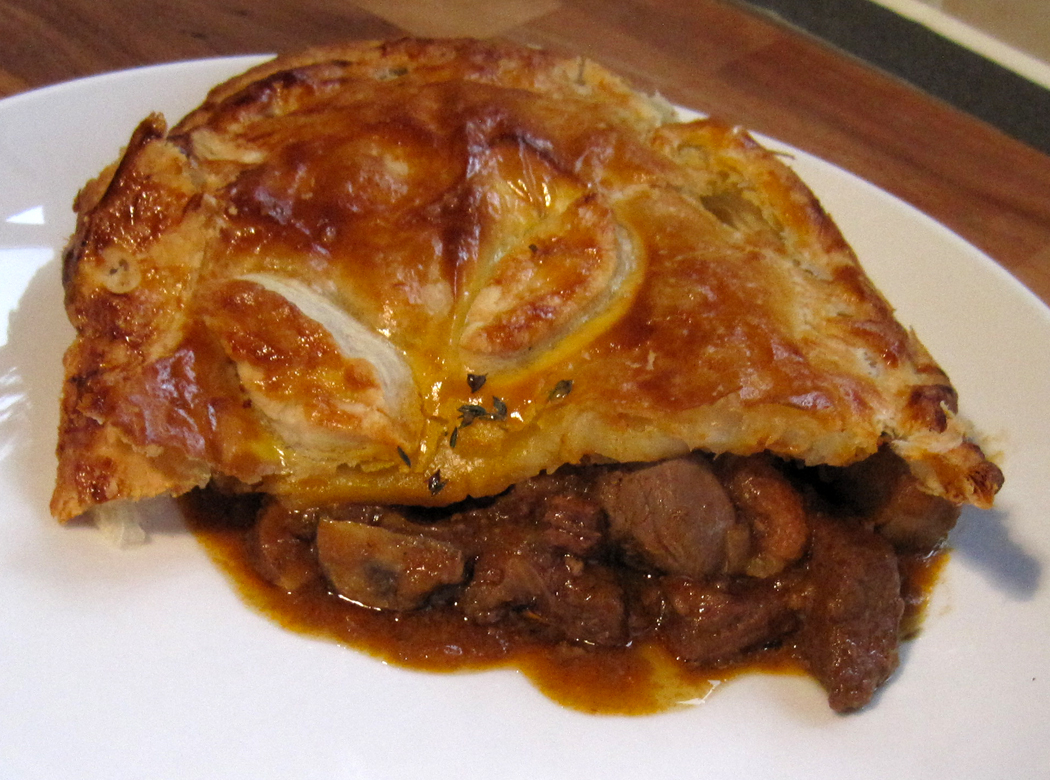


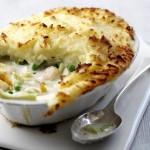
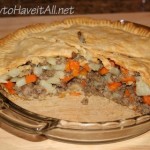
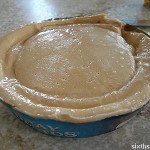
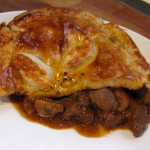


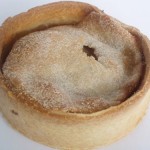


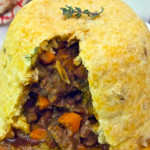
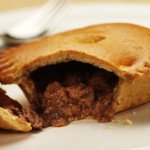
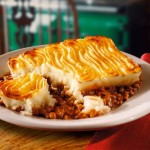
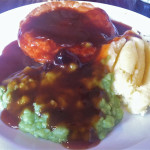

Is anyone able to recommend cheap Self Esteem Counselling B2B Data? Thank you 😀
I’m now not sure the place you’re getting your information, but great topic.
I needs to spend some time finding out much more or working out more.
Thanks for fantastic info I was looking for this information for my
mission.
Can someone recommend Rompers and Jump Suits? Cheers xx
By way of introduction, I am Mark Schaefer, and I represent Nutritional Products International. We serve both international and domestic manufacturers who are seeking to gain more distribution within the United States. Your brand recently caught my attention, so I am contacting you today to discuss the possibility of expanding your national distribution reach.We provide expertise in all areas of distribution, and our offerings include the following: Turnkey/One-stop solution, Active accounts with major U.S. distributors and retailers, Our executive team held executive positions with Walmart and Amazon, Our proven sales force has public relations, branding, and marketing all under one roof, We focus on both new and existing product lines, Warehousing and logistics. Our company has a proven history of initiating accounts and placing orders with major distribution outlets. Our history allows us to have intimate and unique relationships with key buyers across the United States, thus giving your brand a fast track to market in a professional manner. Please contact me directly so that we can discuss your brand further. Kind Regards, Mark Schaefer, marks@nutricompany.com, VP of Business Development, Nutritional Products International, 101 Plaza Real S, Ste #224, Boca Raton, FL 33432, Office: 561-544-0719